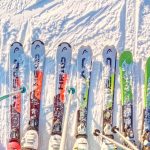Department of the Interior Secretary Ken Salazar said the U.S. Fish and Wildlife Service will distribute more than $76.5 million to the fish and wildlife agencies of the 50 states, commonwealths, the District of Columbia, and territories to help conserve and recover imperiled fish and wildlife through the State Wildlife Grant Program. The $76.5 million dollar figure represents a significant increase in funding over the 2009 levels. Since the programs inception, Congress has provided over $573 million for conservation work on state and private lands.
The State Wildlife Grant program is part of the Department of the Interiors ongoing commitment to the essential conservation efforts of states,” said Salazar. In our challenging economic climate, the program ensures that states will have the necessary resources to help conserve their highest priority wildlife, plants, and habitat-an investment that will pay dividends for years to come.
The State Wildlife Grant Program (SWG) provides federal grant funds for the development and implementation of programs for the benefit of fish and wildlife and their habitats, including species that are not hunted or fished. For the past nine years, this grants program has provided a stable federal funding source for state fish and wildlife agencies. This stability has been critical to the recovery and resilience of many species in greatest need of conservation. This years funds come from the Interior, Environment, and Related Agencies Appropriations Act of 2010 (H.R. 2996).
As these plans show, the programs impact will be felt throughout the country in 2010:
-Kansas will use their funding to restore or enhance 30,000 acres of grasslands. The project will help conserve at-risk species or those that require large home ranges for breeding, including lesser prairie-chicken, greater prairie-chicken, ferruginous hawk, Swainsons hawk, upland sandpiper, grasshopper sparrow, and swift fox.
-Colorado will use their funding to search for suitable habitat to determine the site occupancy of yellow-billed cuckoos. The search will confirm that the species is breeding in the North Fork of the Gunnison River Valley. This is an important first step in efforts to establish a long-term conservation plan for the species in western Colorado.
-Georgia will address the impact of feral swine on natural forest regeneration on Ossabaw Island. The effort will improve habitat for several bird species and the loggerhead turtle. The overall benefit will be an increase in habitat diversity, bird health, and the loggerhead turtle population on Ossabaw Island.
-Washington State will monitor spawning to estimate herring populations in Puget Sound. Findings will be used by the States fish biologists for the conservation and recovery of the herring.















